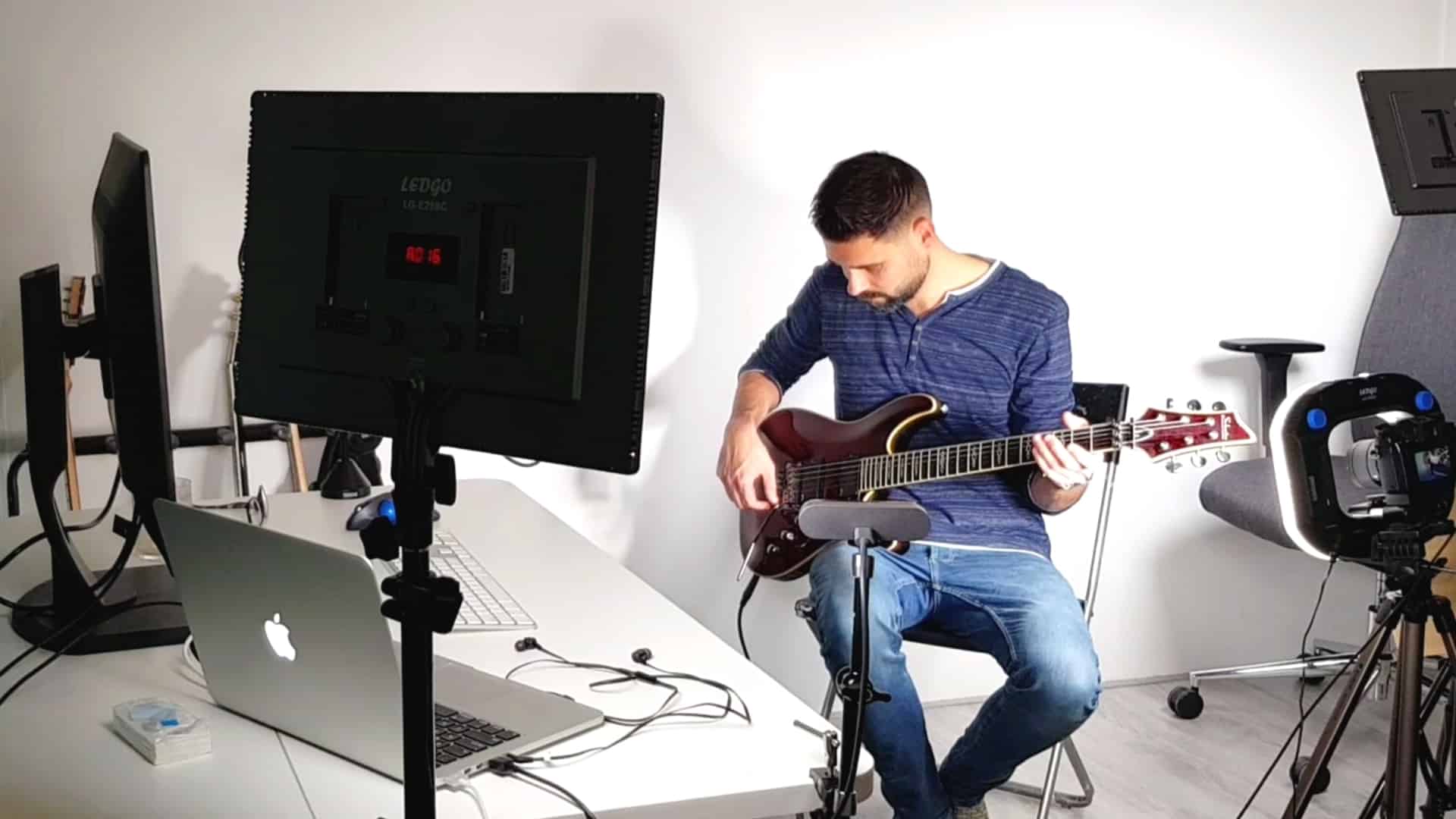Musical technique is the ability of instrumental and vocal musicians to exert optimal control of their instruments or vocal cords in order to produce the precise musical effects they desire.
Improving one’s technique generally entails practicing exercises that improve one’s muscular sensitivity and agility. Technique is independent of musicality.
Do you want to learn how to play the guitar like a pro?
In this article, we will discuss the different techniques that you can use while playing the guitar so you’ll know exactly what everyone’s talking about.
Follow our tips and you will be able to impress your friends and family with your guitar skills in no time!

What are guitar techniques exactly?
Techniques are simply different ways of playing the guitar. There are many different techniques that you can use, and each has its own purpose. But “proper” technique is used to describe the right fingering and approach to make guitar playing easier.
Some techniques are used to make certain sounds, while others are used to make playing the guitar easier.
Don’t worry if you don’t understand all of the terminologies yet – I will explain everything.
List of top guitar techniques to learn
There are many different techniques that you can use to play the guitar, and each has its own purpose. Here is a list of the most popular ones:
Basic guitar techniques
- Picking: This is the most common technique used by guitarists. It is simply using a pick to strum the strings.
- Strumming: This technique is used to create a rhythm. It involves holding down the strings with your fingers and then moving your hand back and forth to create a “strumming” sound.
- Palm muting: This technique is used to create a muted sound. It involves placing your palm on the strings near the bridge of the guitar so that the strings are not able to vibrate freely.
- Barre chords: This technique is used to play chords that would otherwise be difficult to play. It involves using your index finger to “barre” all of the strings at a certain fret. This allows you to play chords that would otherwise be impossible to play.
- Fingerpicking: This technique uses your fingers to pluck the strings instead of using a pick. It is great for playing intricate melodies and harmonies.
- String bending: This technique is used to create a bending sound. It involves using your fingers to “bend” the string so that it creates a higher pitch.
- Vibrato: This technique is used to create a vibrating sound. It involves quickly moving your finger back and forth on the string so that it vibrates.
- Sliding technique: This technique is used to create a sliding sound. It involves holding down a note with your finger and then “sliding” your finger up or down the string so that it creates a higher or lower pitch.
Advanced guitar techniques
- Pull offs: This technique is used to create a smooth sound. It involves picking a note with your pick and then quickly “pulling off” your finger so that the string vibrates freely.
- Hammer ons: This technique is similar to pull offs, but it involves picking a note with your pick and then quickly “hammering on” another finger so that the string vibrates freely.
- Economy picking: This technique is used to play fast passages. It involves using a pick to alternate between picking up and down strokes.
- Hybrid picking: This technique is similar to economy picking, but it involves using both a pick and your fingers.
- Alternate picking: This technique is used to play fast passages. It involves using a pick to alternate between picking up and down strokes.
- Sweep picking: This technique is used to play fast arpeggios. It involves using a pick to “sweep” across the strings so that you can play all of the notes in an arpeggio. It involves using a pick to “sweep” across the strings so that all of the strings are played in one fluid motion.
- Pinch harmonics: This technique is used to create a high-pitched “squealing” sound. It involves placing your thumb or finger on the string near the fret and then bending the string so that it creates a harmonic sound.
- Finger tapping: This technique is used to create a fast flurry of notes. It involves using the fingers of your picking hand to “tap” on the string at a certain fret and sound that note so you can play faster.
- Pre bending: This technique is used to create a smooth sound. It involves pressing down on the string with your finger, and then bending it before you pick it so that it creates a higher pitch before you release your finger to come down to the regular fretted note.
- Double stops: This technique is used to create a fuller sound. It involves playing two notes at the same time with either your pick or your fingers.
- Legato: This technique is used to create a smooth sound. It involves “hammering on” and “pulling off” multiple notes in succession so that they are played fluidly instead of individually.
- Arpeggiated chords: This technique is used to create an arpeggio. It involves picking the notes of a chord one at a time in succession so that they are played individually instead of all at once.
- String skipping: This technique is used to create a fast flurry of octaves. It involves “skipping” over strings so that you can get to higher notes faster.
How many guitar techniques are there?
There are many different guitar techniques, including barre chords, pull offs, hammer ons, string bending, vibrato, sliding technique, economy picking, hybrid picking, alternate picking, legato playing, arpeggiated chords and sweeping or sweep picking.
Some other popular techniques include pinch harmonics, finger tapping, pre bending. There are over 100 guitar techniques you could utilize.
What is the hardest guitar technique?
Some of the most challenging guitar techniques include finger tapping, sweep picking, string skipping, and legato playing. However, mastering any guitar technique takes a lot of practice and dedication.
Ultimately, what may be considered the hardest guitar technique for one person may be relatively easy for another.
Tips for practicing guitar techniques
- Start slow and gradually increase the speed.
- Try using a metronome to keep a consistent tempo.
- Repeat the technique multiple times so that you can get comfortable with it.
- Experiment with different techniques and see what sounds you can create.
Especially practicing with a metronome is key to avoiding bad habits in your playing.
Every technique has its place, but the main thing is that you can create beautiful and expressive music with them. Without playing in time and creating cool syncopes or other “groovy licks”, what use are they?
How to improve your technique
To improve their technique, musicians often practice fundamental patterns of notes such as the natural, minor, major, and chromatic scales, minor and major triads, dominant and diminished sevenths, formula patterns and arpeggios.

For example, triads and sevenths teach how to play chords with accuracy and speed. Scales teach how to move quickly and gracefully from one note to another (usually by step).
Arpeggios teach how to play broken chords over larger intervals.
Many of these components of music are found in difficult compositions, for example, a large tuple chromatic scale is a very common element to classical and romantic era compositions as part of the end of a phrase.
Heinrich Schenker argued that musical technique’s “most striking and distinctive characteristic” is repetition. Works known as études (meaning “study”) are also frequently used for the improvement of technique.
Conclusion
Whether you are a beginner or an experienced guitarist, practicing different guitar techniques can help you take your playing to the next level.
Whether it is string bending, vibrato, finger tapping, or any of the other techniques listed above, there are many ways to develop your skills and create unique sounds that will set you apart from other players.
I'm Joost Nusselder, the founder of Neaera and a content marketer, dad, and love trying out new equipment with guitar at the heart of my passion, and together with my team, I've been creating in-depth blog articles since 2020 to help loyal readers with recording and guitar tips.

